Last updated on
Discover practical tips and innovative solutions for organizing your kitchen utensils effectively without the need for drawers in this insightful guide.
The kitchen is the heart of every home, and it’s not just a place to cook meals but also a space where we bond with our loved ones. However, if your kitchen lacks drawers, organizing your utensils can be quite challenging.
You might find yourself struggling to locate that one particular spoon or spatula amidst the clutter. But don’t worry; we’ve got you covered! In this article, we’ll share some clever tips and tricks on how to organize your kitchen utensils without drawers so that you can enjoy a clutter-free and functional kitchen.
So let’s dive in!
Key takeaways:
- Assess your kitchen space and identify areas for storage.
- Sort utensils by function to make them easier to find.
- Group similar utensils together for efficient organization.
- Declutter and keep only essential utensils.
- Use countertop organizers and magnetic solutions for easy access.
What's Inside
Assessing Your Kitchen Space
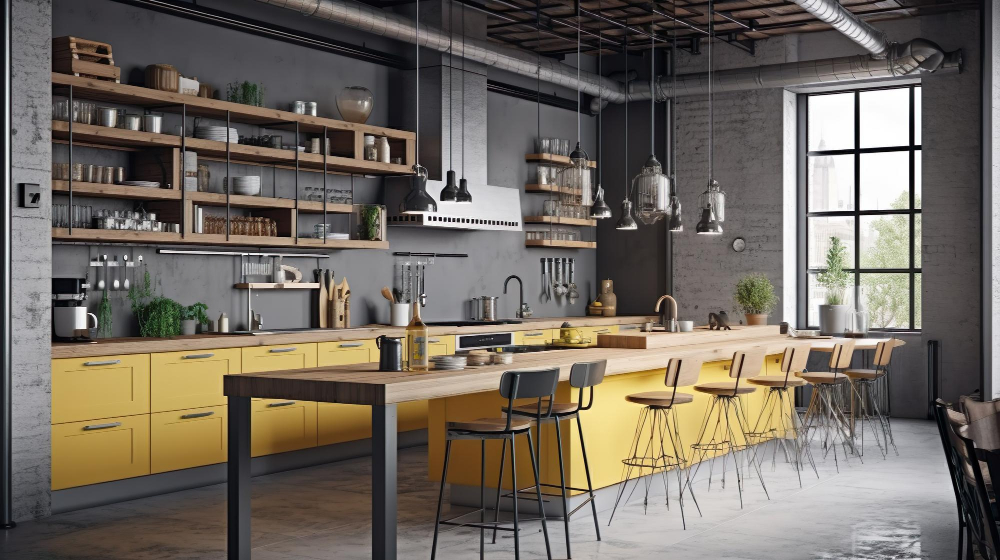
The first step in organizing your kitchen utensils without drawers is to assess the available space. Take a look at your kitchen and identify areas where you can store utensils.
This could be on countertops, walls, or even inside cabinets.
Consider the size of your kitchen and how much counter space you have available. If you have limited countertop space, consider using wall-mounted organizers or hanging hooks to free up some room.
Another factor to consider is how often you use each type of utensil. For example, if you frequently use a particular spatula or spoon for cooking meals every day, it makes sense to keep it within reach on the countertop rather than storing it away in a cabinet.
Sorting Utensils By Function
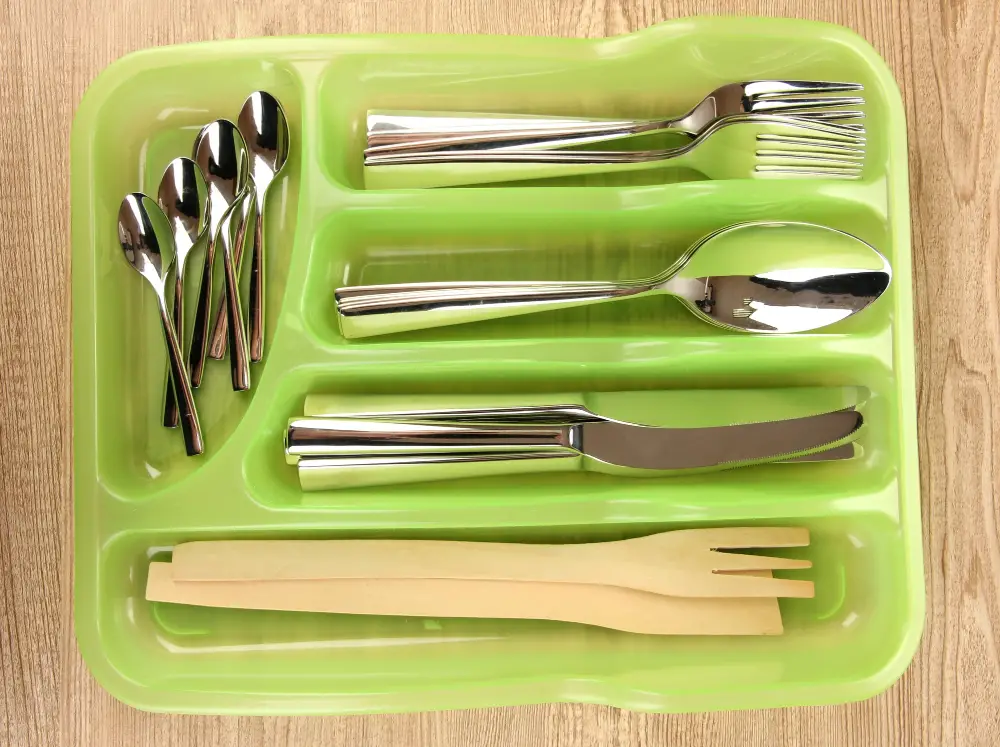
This means grouping similar utensils together based on their purpose. For instance, you can group all baking tools like measuring cups and spoons in one container or drawer while keeping cooking utensils such as spatulas and ladles in another.
Sorting by function makes it easier to locate specific items when needed, saving time and reducing clutter. It also helps prevent confusion when preparing meals since each tool has its designated spot.
To make sorting even more efficient, consider decluttering your collection of kitchen tools first before organizing them according to their functions. Keep only the essentials that you use regularly and donate or discard any duplicates or unused items taking up valuable storage space.
Grouping Similar Utensils Together

When you group similar items, it becomes easier to find what you need quickly. For instance, grouping all the baking tools like measuring cups and spoons in one place will save time when preparing baked goods.
To get started with this method of organization, sort through your utensils by function or use. Group them into categories such as cooking tools (spatulas, tongs), cutting tools (knives), serving utensils (ladles, serving spoons), baking equipment (whisks, mixing bowls) among others.
Once sorted out into groups based on their functions or uses; designate a specific area for each category of items in your kitchen space. You can use drawer dividers or containers to keep everything neat and tidy within each section.
Declutter and Keep Essentials
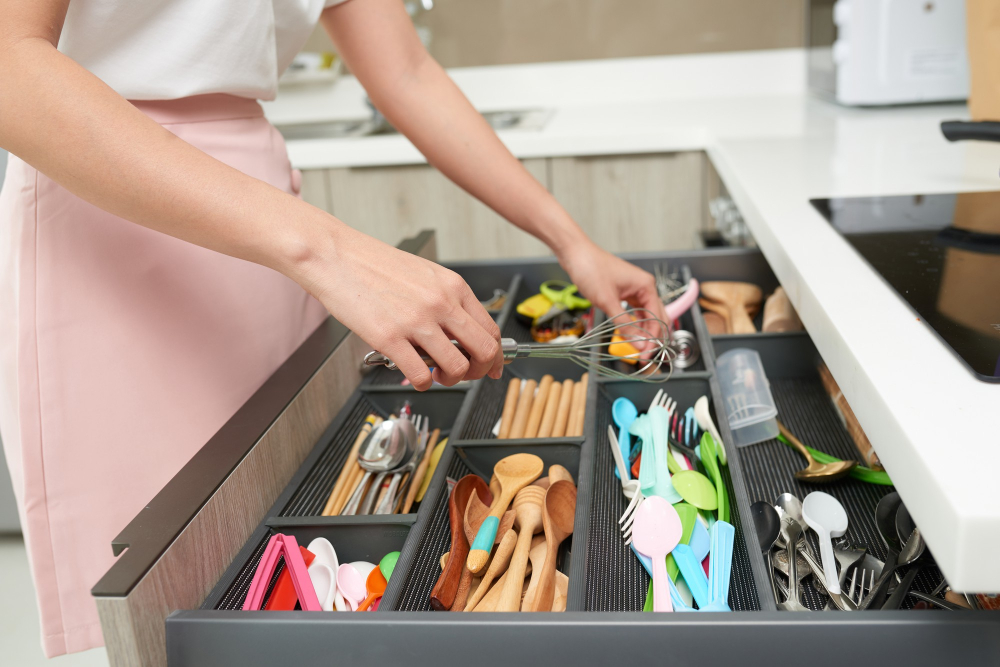
Take a close look at all your utensils and ask yourself if you really need them. If there are any duplicates or items that you haven’t used in months, consider donating or selling them.
Once you’ve narrowed down your collection of utensils to the essentials, it will be easier to organize them effectively without cluttering up valuable counter space. You’ll also have an easier time finding what you need when cooking meals.
Remember that keeping things simple is key when organizing without drawers in the kitchen.
Create Functional Work Zones
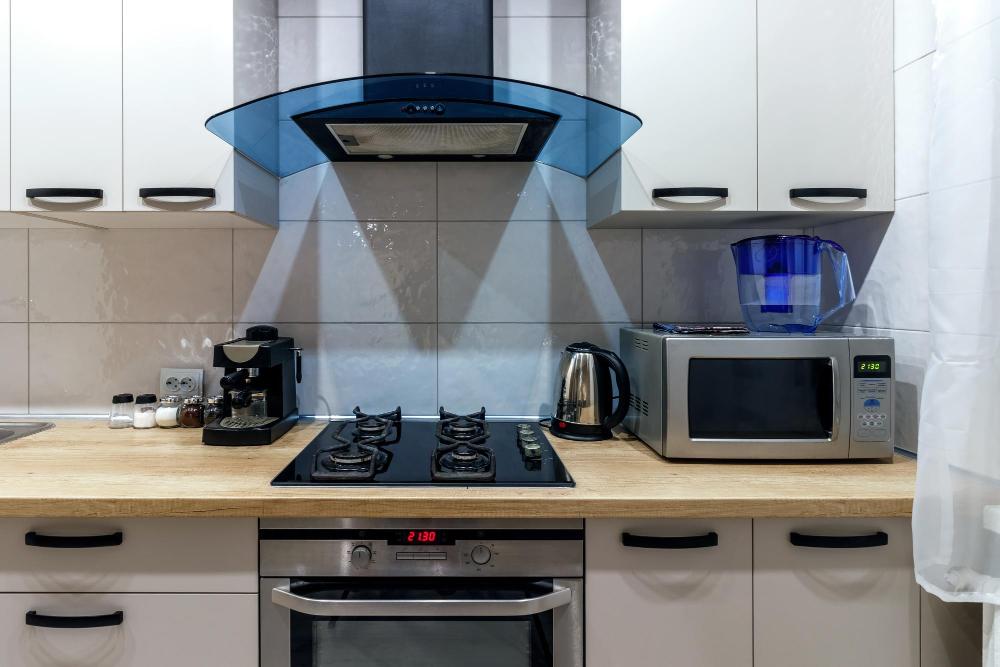
This means grouping together the tools you use for specific tasks and placing them in a designated area. For example, keep all your baking utensils like measuring cups, spoons, whisks and spatulas in one zone near the oven or mixer.
Similarly, place all cooking-related items such as ladles and tongs near the stove or cooktop. By doing so you’ll save time searching for what you need while cooking up a storm.
Creating functional work zones also helps to reduce clutter on countertops by keeping everything organized within reach but out of sight when not needed. It’s an excellent way to streamline your workflow in the kitchen while making it look neat at the same time.
To create these zones effectively assess how much space is available around each workstation before deciding where each group of utensils should go.
Place Everyday Utensils Within Reach

You don’t want to be rummaging through drawers or cabinets every time you need a spoon or spatula. Therefore, placing everyday utensils within reach is an excellent way of ensuring that they are easily accessible when needed.
One practical solution for this is by using countertop organizers such as crocks and canisters. These containers come in different sizes and shapes, making them perfect for holding various types of utensils like spoons, whisks, tongs and ladles.
Another option would be to use a wall-mounted magnetic strip where you can hang metal utensils like knives or scissors within easy reach while keeping them out of the way when not in use.
By having your most frequently used tools close at hand on the counter or mounted on the wall near your cooking area will save you time searching through drawers while preparing meals.
Utilizing Countertop Organizers
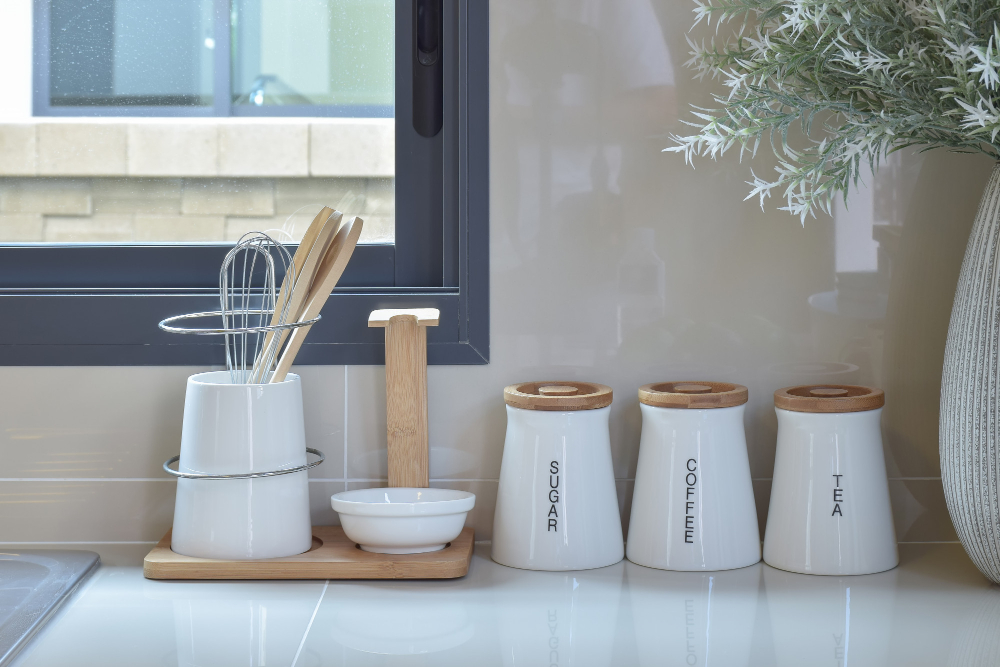
They come in various shapes and sizes, making it easy to find one that suits your needs. For instance, you can use a utensil holder to keep frequently used items within reach while cooking.
A knife block is also an excellent option for keeping sharp knives safely stored on the counter.
Another great idea is using tiered racks or shelves to store plates and bowls vertically instead of stacking them horizontally in cabinets. This not only saves space but also makes it easier to access dishes when needed.
However, be mindful not to clutter your countertops with too many organizers as this may make your kitchen look messy and disorganized rather than tidy.
Use Countertop Utensil Holders

These holders come in various shapes, sizes, and materials such as stainless steel, ceramic or bamboo. They can hold anything from spoons and spatulas to whisks and tongs.
To use this method effectively, start by selecting the right size holder for your utensils collection. You don’t want it too small that it becomes overcrowded or too big that it takes up unnecessary space on the counter.
Once you have chosen the appropriate size holder(s), group similar utensils together based on their function (e.g., baking tools in one holder and cooking tools in another). This will make them easier to find when needed.
Another advantage of using countertop utensil holders is that they are easy to clean since most models are dishwasher safe or can be wiped down with a damp cloth. Plus, they add an aesthetic appeal by keeping everything organized neatly on display rather than hidden away inside drawers.
Hanging Utensils On Hooks
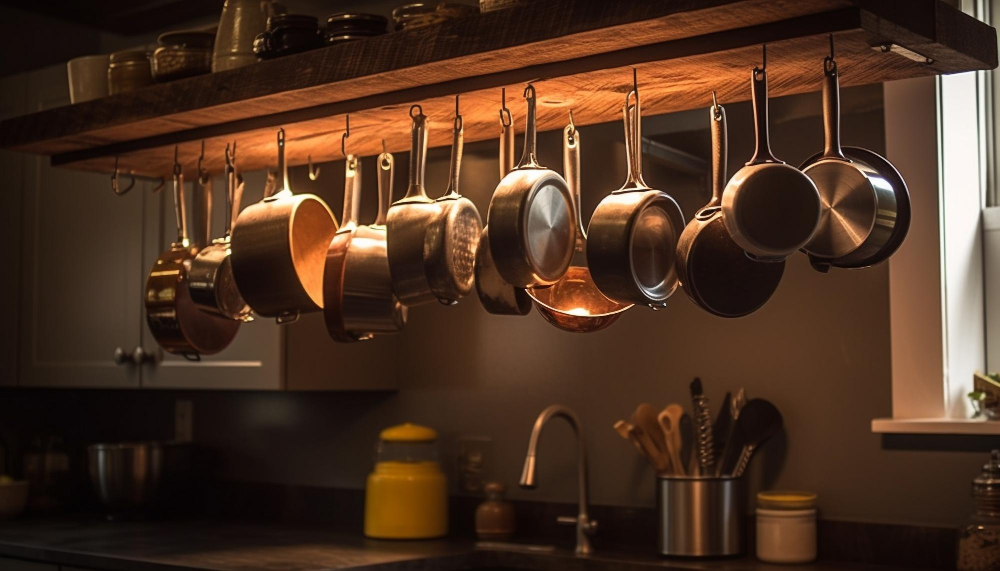
Hooks can be installed under cabinets, on walls or even above the stove for easy access to frequently used utensils. This method not only saves space but also adds a decorative touch to your kitchen.
To get started with this organization technique, first assess which utensils you use most often and group them together by function. Then, select the appropriate size of hooks for each type of tool – larger ones for pots and pans while smaller ones work well for spoons or spatulas.
When hanging your utensils on hooks, make sure they are spaced out enough so that they don’t bump into each other when you reach for one. You can also add labels or tags to help identify what’s hanging where if needed.
Wall-mounted Magnetic Strips
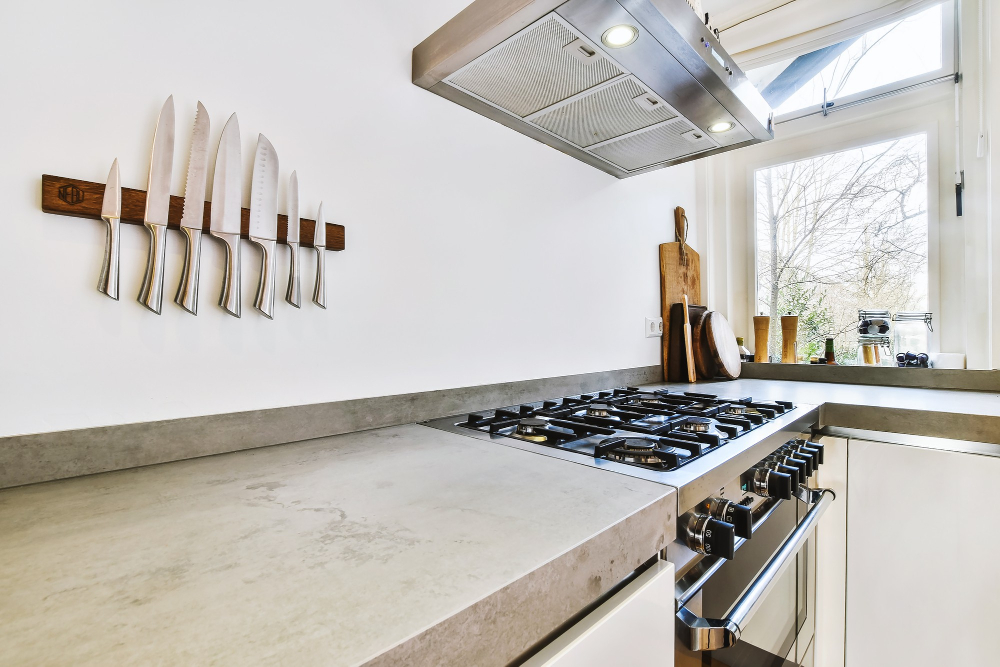
These strips can be easily installed on any wall, and they provide a convenient way to store metal utensils such as knives, spoons, and forks. By using these magnetic strips, you can keep your countertops clutter-free while still having easy access to the tools you need.
To use this method effectively, start by assessing the available wall space in your kitchen. Choose a location that is easily accessible but out of reach of children or pets.
Once you have identified the ideal spot for mounting the strip(s), install them securely with screws or adhesive tape.
Next, sort through your utensil collection and select those made from metal that will stick to magnets (avoid plastic). Arrange them neatly on the strip according to size or function so that they are easy to locate when needed.
Using Pegboards for Storage
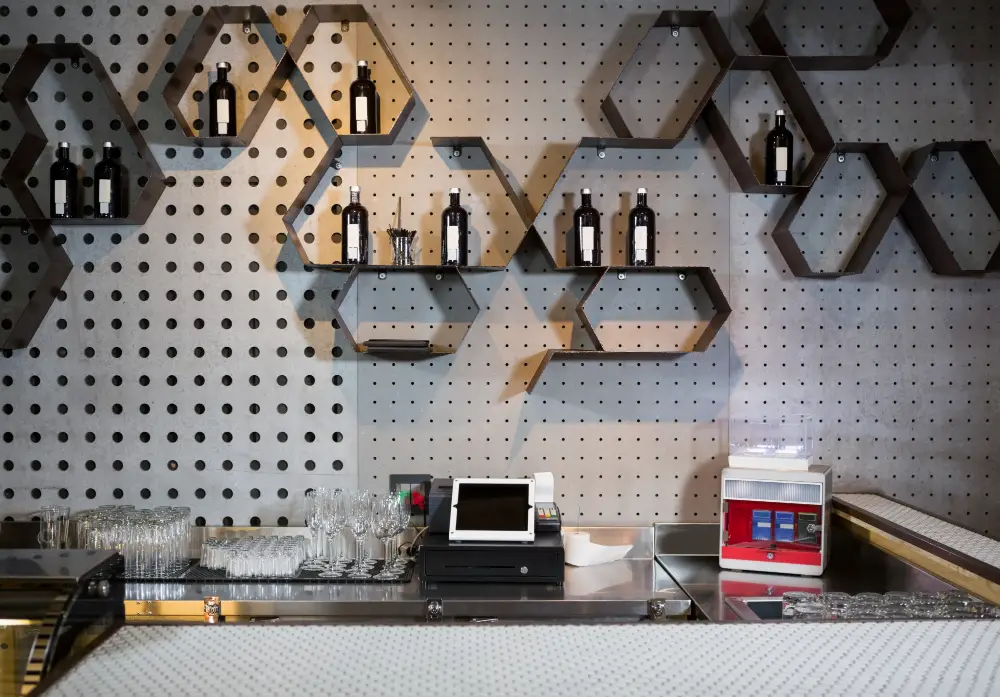
They come in different sizes, colors, and materials to suit your style and needs. Pegboards allow you to hang various items such as pots, pans, ladles, spatulas on hooks or shelves for easy access.
To use pegboards effectively in the kitchen:.
1. Choose the right size: Measure the available space where you want to install a pegboard before purchasing one.
2. Plan ahead: Decide which utensils will go on each hook or shelf so that everything has its place.
3. Install it properly: Make sure that your pegboard is securely mounted onto studs or anchors so it can hold weight without falling off.
4. Labeling system: Use labels with pictures of each item if necessary for quick identification when cooking.
Implementing Utensil Rails
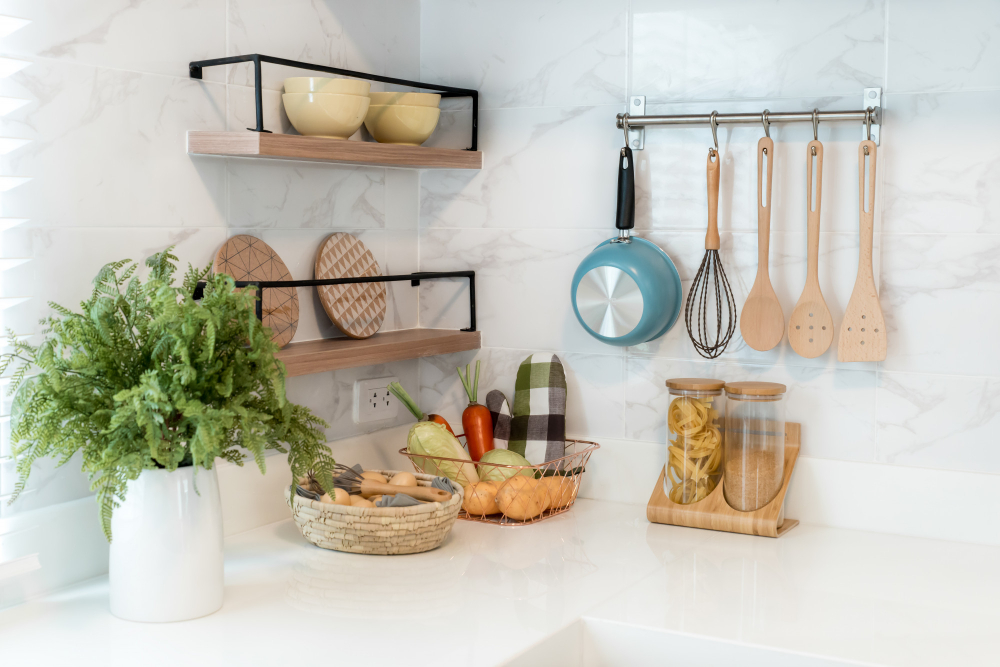
They are easy to install and can be customized to fit any kitchen space. You can choose from a variety of materials, including wood, metal or plastic, depending on your preference.
To implement utensil rails in your kitchen, start by selecting the right location for them. Consider installing them above the stove or sink area where you frequently use utensils while cooking.
This will make it easier for you to access them when needed.
Next, select the appropriate rail size based on how many utensils you have and their sizes. You don’t want a rail that’s too small as it won’t accommodate all of your tools; neither do you want one that’s too large as it may take up unnecessary space.
Once installed correctly with screws or adhesive strips (depending on material), hang each tool individually using S-hooks so they’re easily accessible when cooking meals.
Adding Shelves for Display
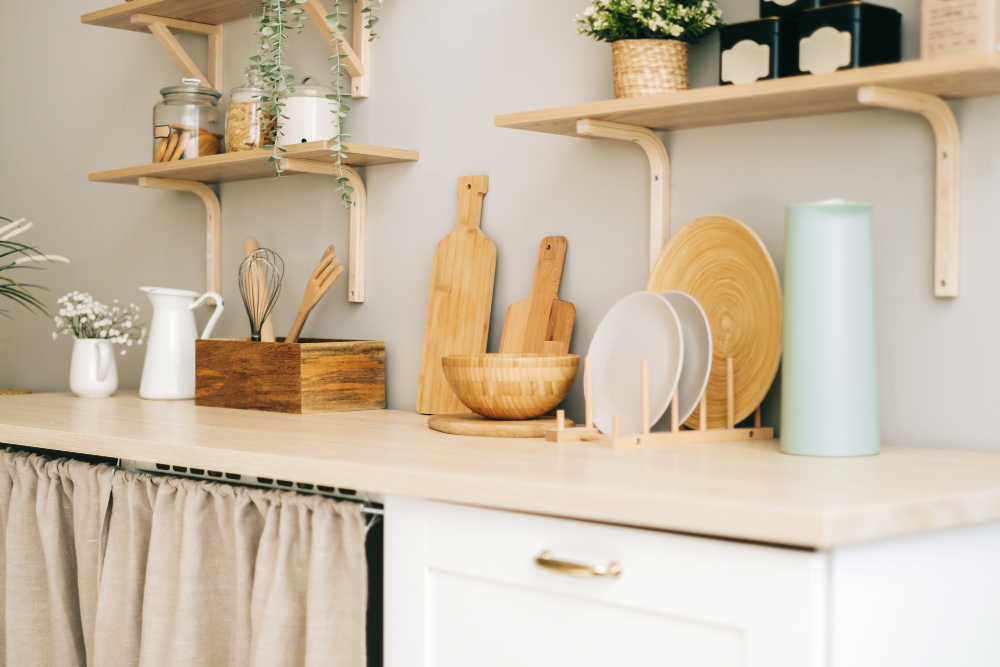
This not only provides additional storage space but also adds an element of visual interest to your kitchen decor. You can choose from various shelf designs and materials such as wood, glass, or metal.
When installing shelves in the kitchen, ensure that they are sturdy enough to hold the weight of your utensils and other items you plan on displaying. Also, make sure that they are installed at a height where it’s easy for you to access them without straining yourself.
Customize Cabinet Interiors
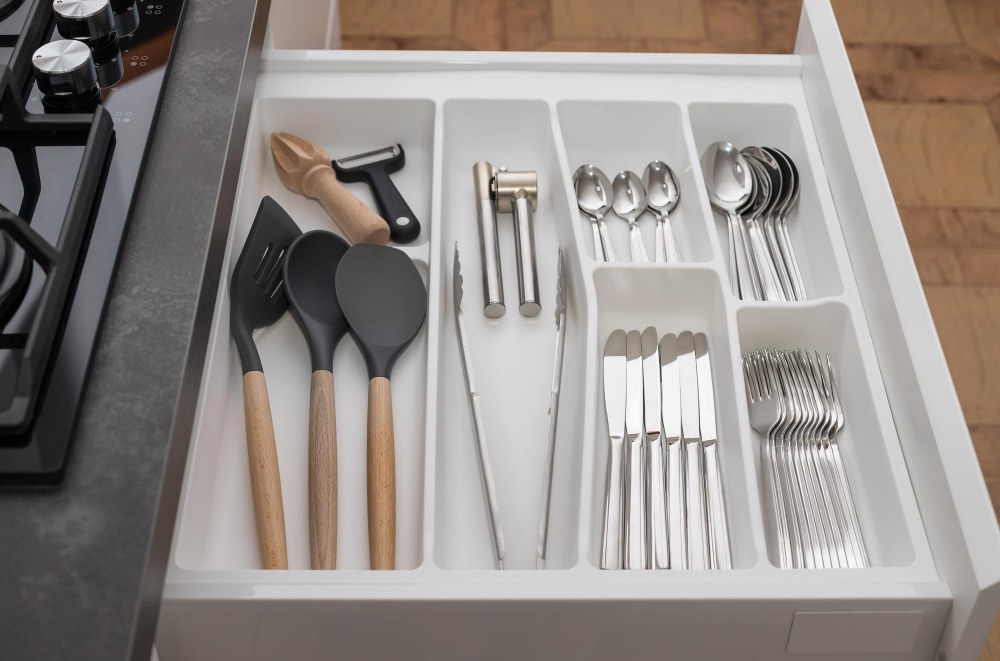
You can add dividers or shelves to create separate compartments for different types of utensils. This will help you keep everything organized and easy to find when you need it.
For instance, if you have a lot of baking tools like measuring cups and spoons, mixing bowls, whisks etc., consider adding pull-out drawers with built-in dividers that are specifically designed for these items. Similarly, if you own many pots and pans but only use some frequently while others rarely see the light of day; install vertical racks inside the cabinet doors so that they’re easily accessible without taking up valuable counter space.
Maximizing Vertical Space
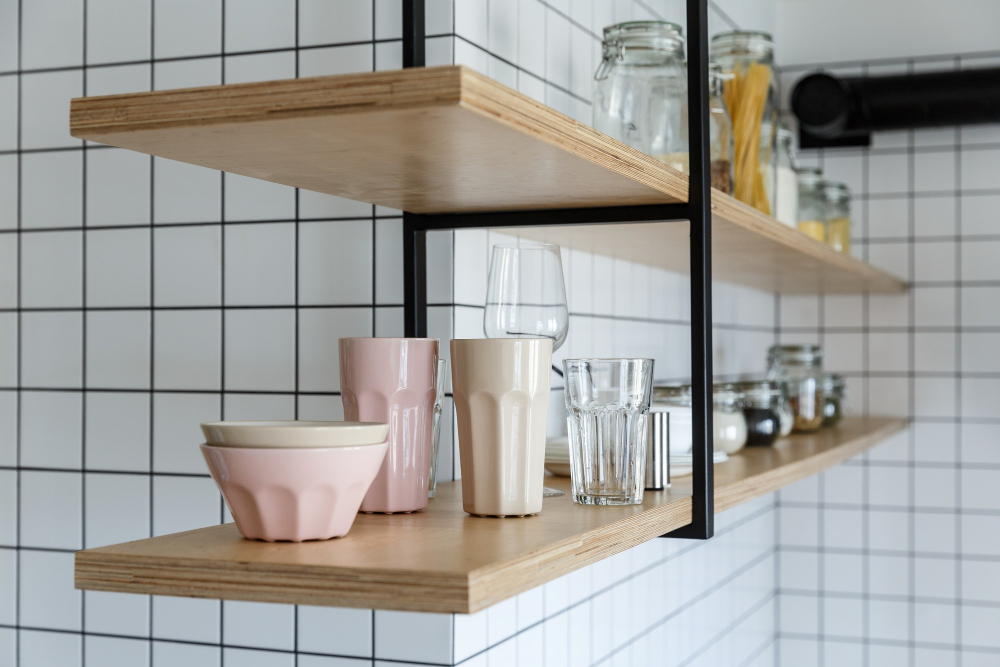
You can use wall-mounted shelves or racks to store your utensils and free up valuable counter space. Vertical storage solutions are also perfect for small kitchens where every inch of available space counts.
One effective way of maximizing vertical storage is by installing open shelving units on the walls above your countertops. This will provide ample room for storing all kinds of kitchen tools and gadgets while keeping them within easy reach.
Another option is to install pegboards on the walls, which allow you to hang various types of utensils using hooks or clips. Pegboards come in different sizes and colors, making it easy for you to choose one that matches your kitchen’s decor.
You can also consider adding wire baskets or metal bins under cabinets as an additional storage solution that maximizes vertical spaces in the lower part of the cabinet area.
Repurposing Old Containers
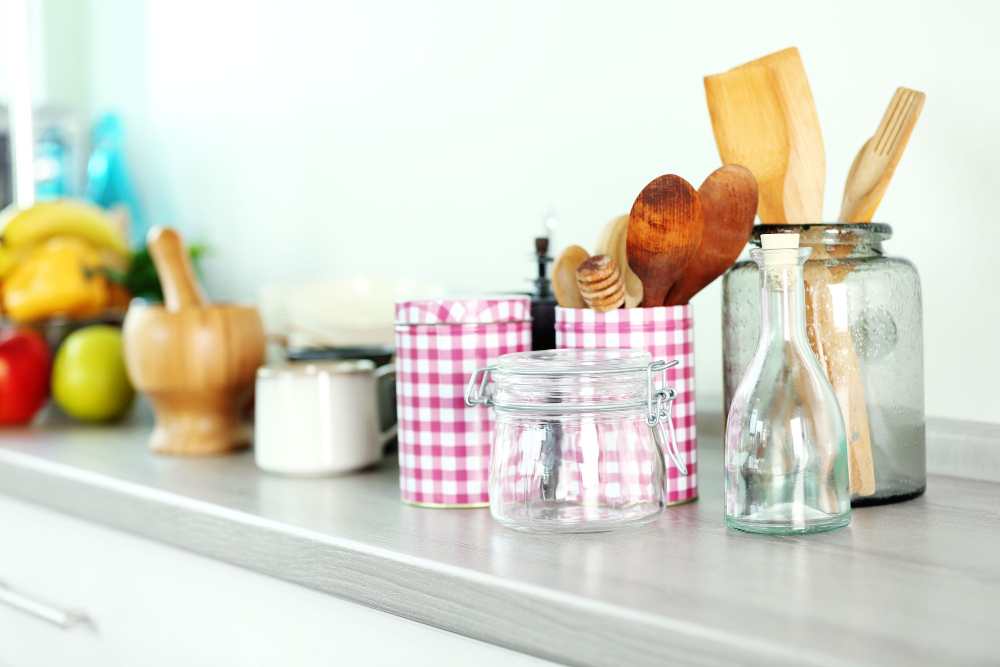
You can use mason jars, tin cans, or even plastic bottles to store your utensils. Not only is this an eco-friendly solution but it’s also a great way to add some character and charm to your kitchen.
To get started with this method of organization, simply clean out the container and remove any labels or stickers. Then decorate them as desired using paint or washi tape.
Once decorated, fill the containers with similar utensils such as wooden spoons in one jar and spatulas in another. This will make it easier for you to find what you need when cooking.
Organizing With Magnetic Solutions
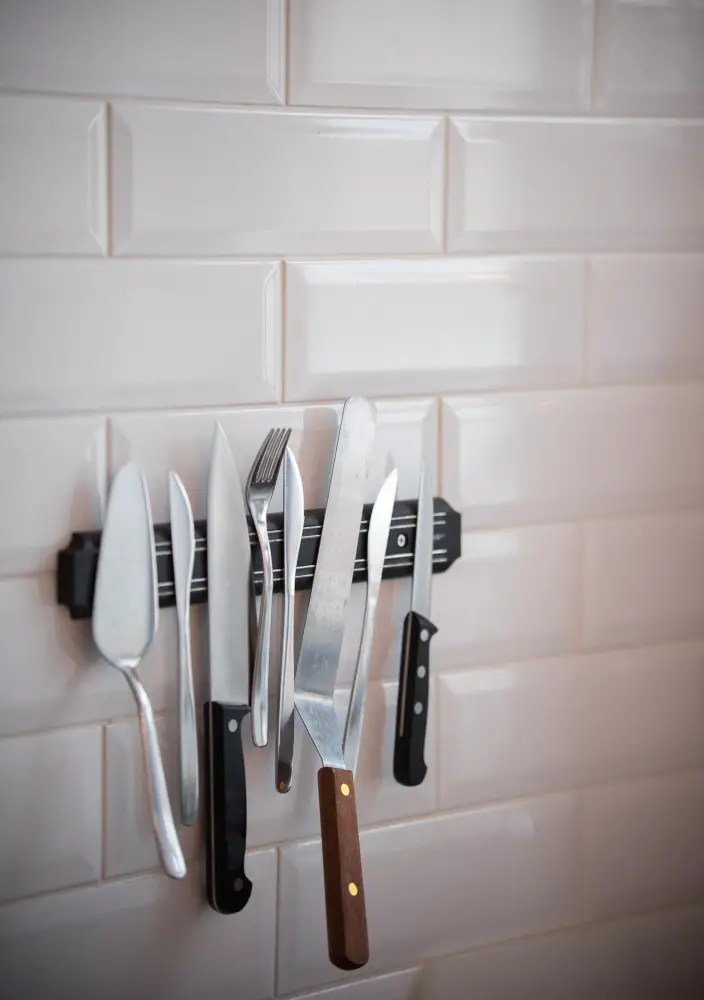
Magnetic strips can be mounted on the wall, and you can hang your metal utensils such as knives, spoons, and forks on them. This not only saves space but also makes it easy for you to access the tools when cooking.
Another magnetic solution is using magnetic spice jars that stick to the fridge or any other metallic surface in your kitchen. You can store small items like spices or herbs in these jars instead of cluttering up valuable counter space.
If you have limited cabinet storage space, consider investing in a magnetic knife holder that attaches directly onto the side of your refrigerator or another metal surface within reach while cooking.
Employ Rolling Carts for Storage
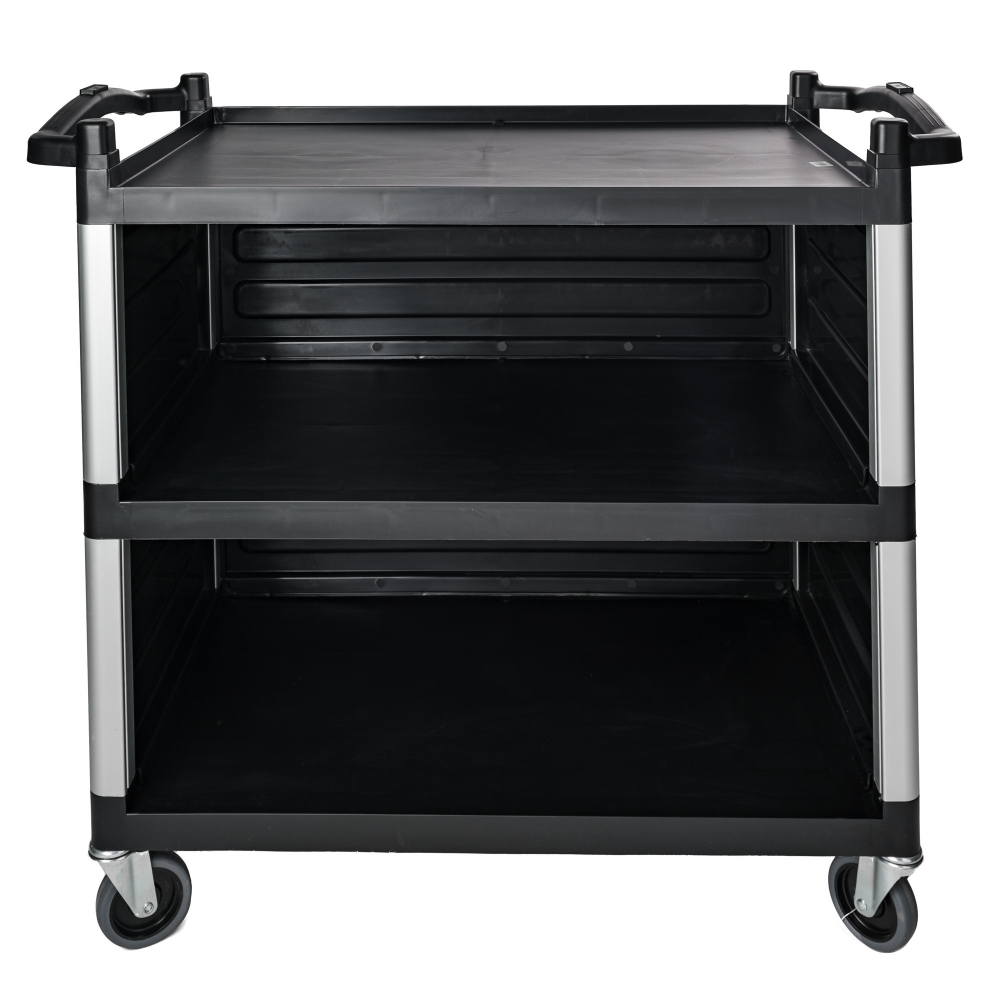
They offer mobility, versatility, and ample storage space to keep all your essentials within reach. You can use them to store pots and pans, baking sheets, cutting boards or even as a mobile pantry.
When choosing a rolling cart for your kitchen utensils, consider the size of the cart in relation to the available space in your kitchen. A compact-sized cart is ideal if you have limited floor space while a larger one would be perfect if you have more room.
You can also opt for carts with adjustable shelves that allow you to customize their height according to the size of your utensils. Choose carts made from durable materials such as stainless steel or wood that are easy-to-clean and long-lasting.
Utilizing Door & Wall Space
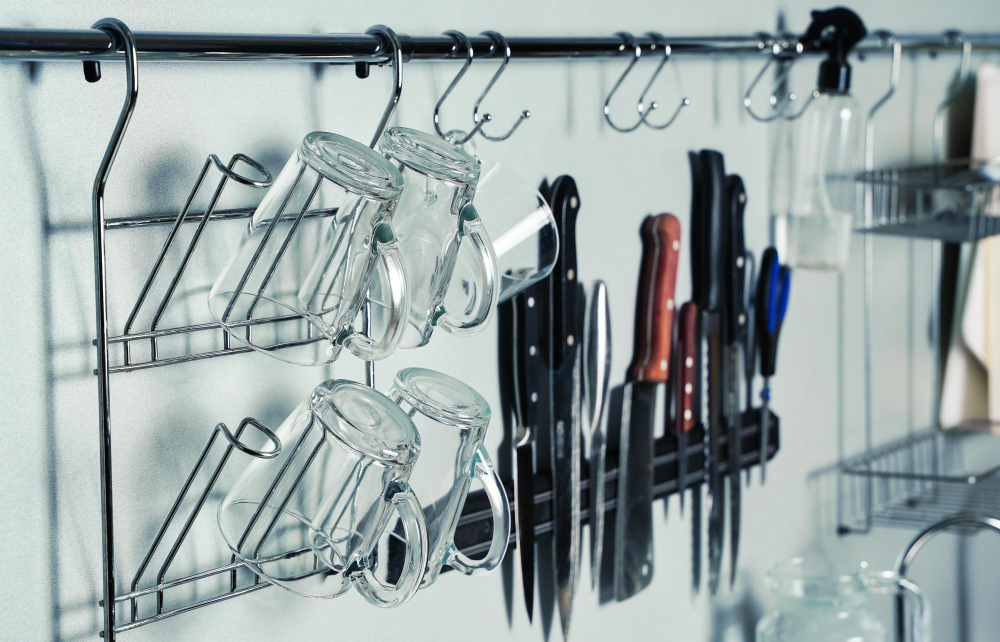
These areas can be used for storage without taking up valuable counter or cabinet space.
One way to utilize door space is by installing an over-the-door organizer. This type of organizer typically has pockets that are perfect for storing smaller utensils like measuring spoons, whisks, and spatulas.
Another option is to install hooks on the inside of cabinet doors. You can hang larger items like ladles or tongs from these hooks so they’re easily accessible when you need them.
Wall-mounted solutions are also a great way to free up counter space while keeping your utensils within reach. Magnetic strips mounted on the wall provide a convenient place to store metal tools such as knives and scissors while pegboards offer customizable options for hanging various sizes of cooking equipment.
Maintaining an Organized Kitchen
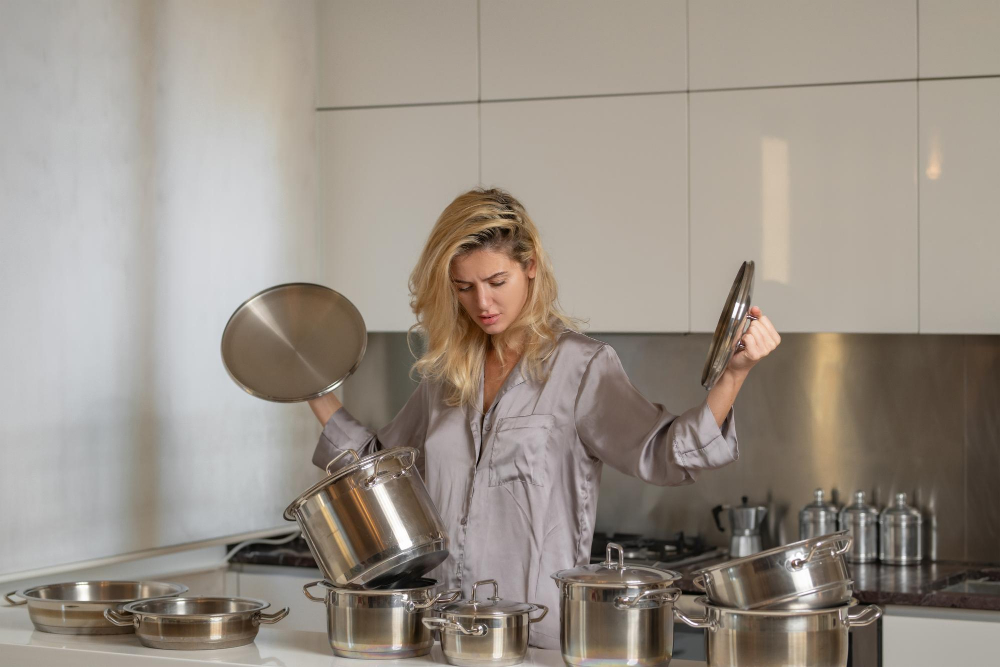
Once you have established a system that works for you, it’s essential to maintain it regularly. This means putting things back where they belong after use and avoiding clutter buildup on countertops or other surfaces.
One way to keep your kitchen organized is by doing a quick clean-up every day before going to bed. Wipe down counters, put away any dishes or utensils left out, and sweep the floor if necessary.
Another helpful tip is to periodically go through your utensil collection and get rid of anything that no longer serves its purpose or has become damaged beyond repair. This will prevent unnecessary clutter from accumulating over time.
Make sure everyone in your household knows where everything belongs so that they can help maintain the organization system too! By following these simple steps consistently, you’ll be able to enjoy a functional and tidy kitchen all year round!
FAQ
What are some creative ways to store kitchen utensils using wall-mounted organizers?
Some creative ways to store kitchen utensils using wall-mounted organizers include utilizing pegboards, magnetic strips, hanging racks, and repurposed items such as old ladder sections or curtain rods.
How can you effectively use countertop storage solutions for organizing kitchen utensils?
Effectively utilize countertop storage solutions for organizing kitchen utensils by selecting appropriate containers, racks, and holders, considering the available space, accessibility, and visual appeal.
What tips can be offered for repurposing everyday items as kitchen utensil storage solutions?
Repurpose everyday items like mason jars, shoe organizers, and magazine racks as creative and space-saving kitchen utensil storage solutions.




